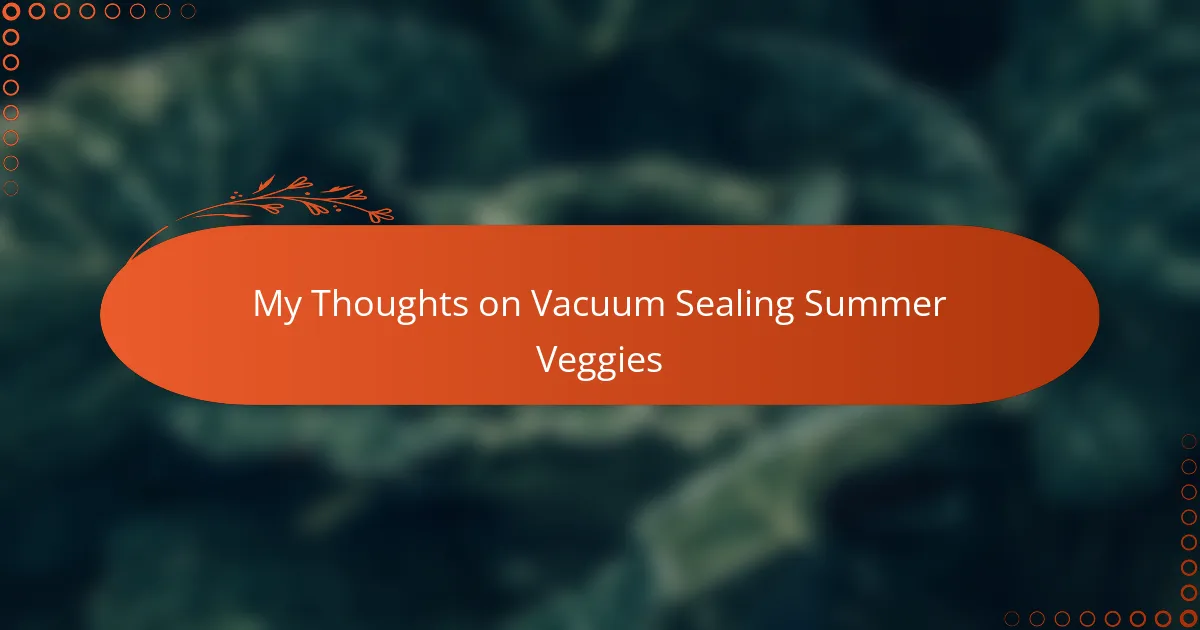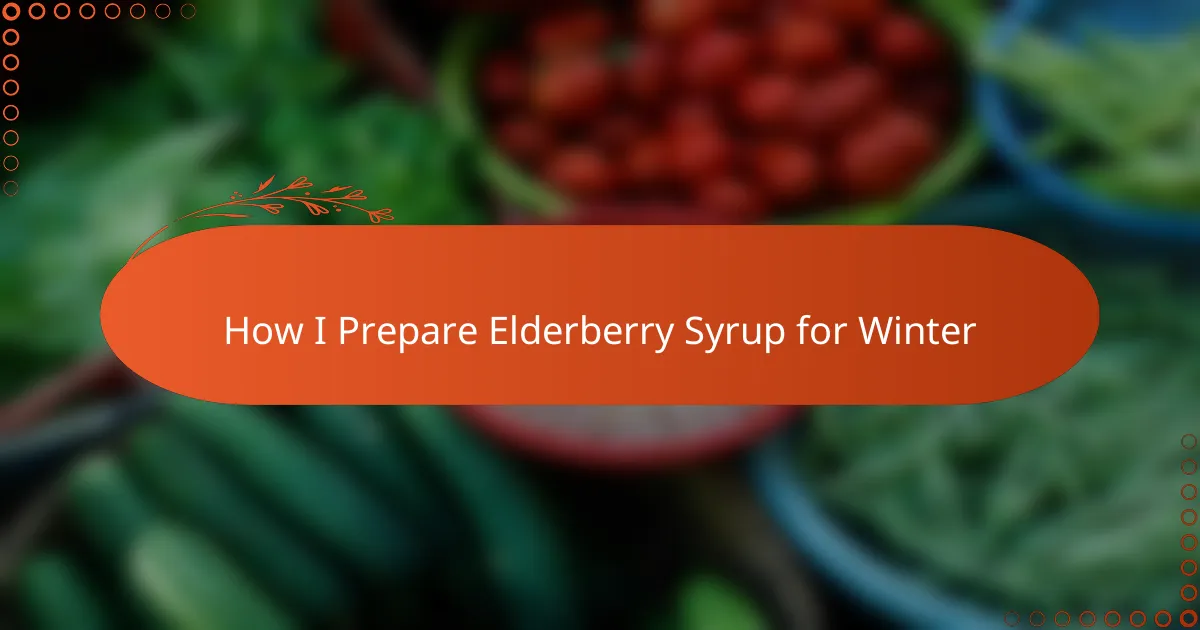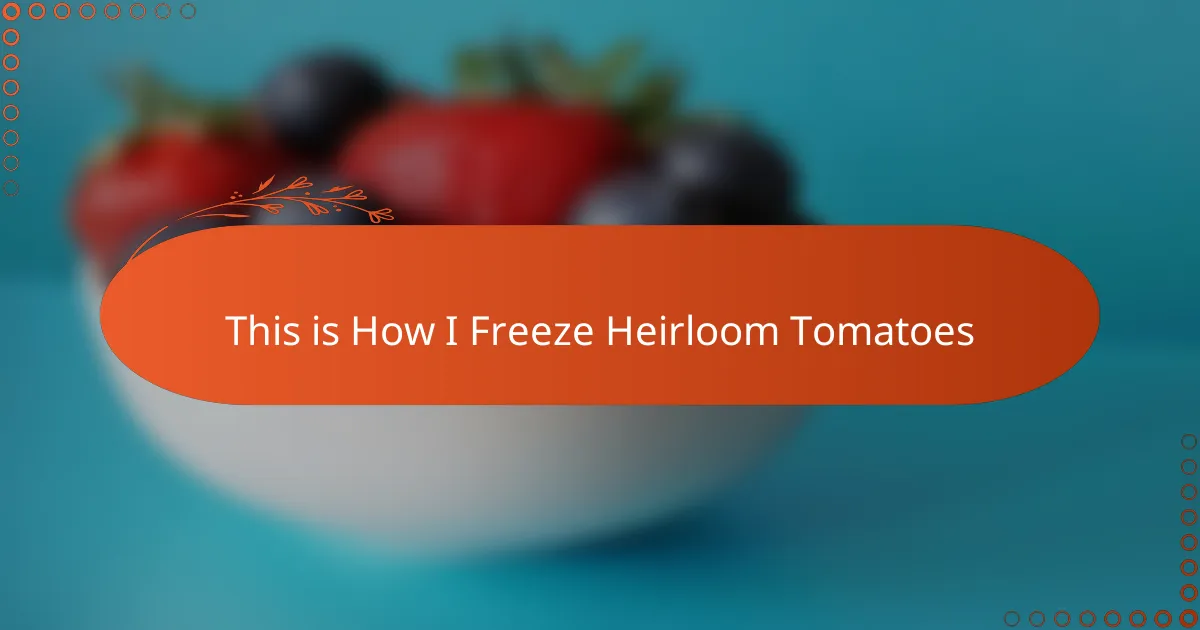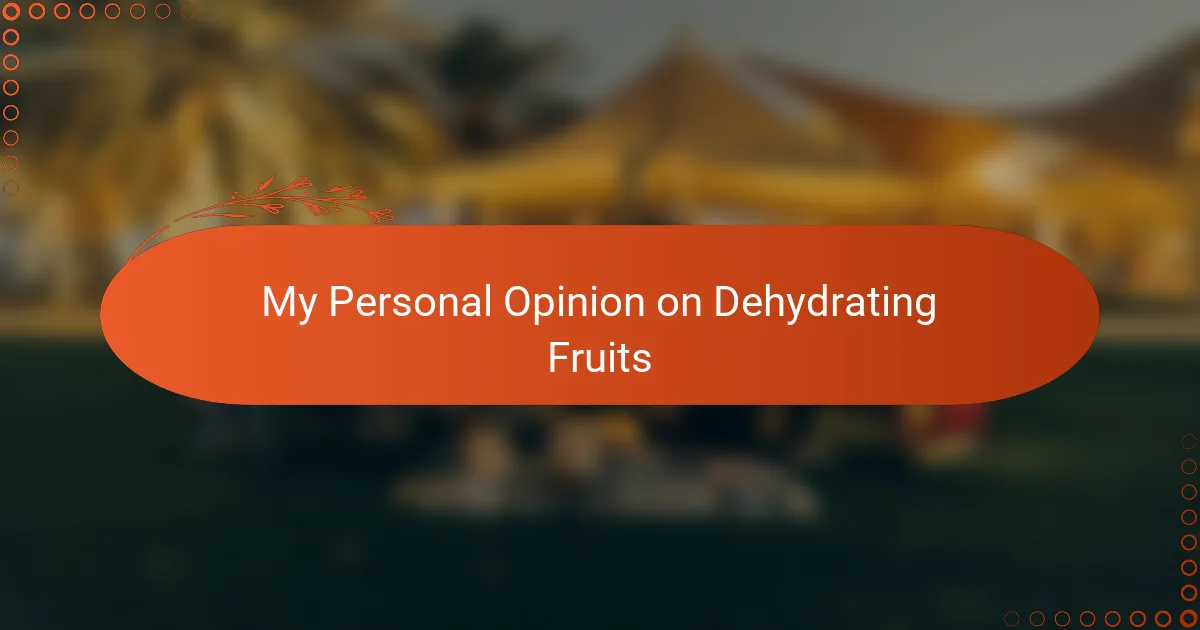Key takeaways
- Vacuum sealing effectively preserves the freshness, flavor, and nutrients of summer vegetables by removing air and preventing spoilage.
- Proper preparation, such as washing, drying, and blanching, is crucial for maximizing the benefits of vacuum sealing.
- Investing in quality vacuum seal bags and consistently labeling and dating sealed bags helps maintain organization and freshness in storage.
- Vacuum sealed veggies can enhance the flavor and texture of various dishes, making meal preparation quicker and more convenient.
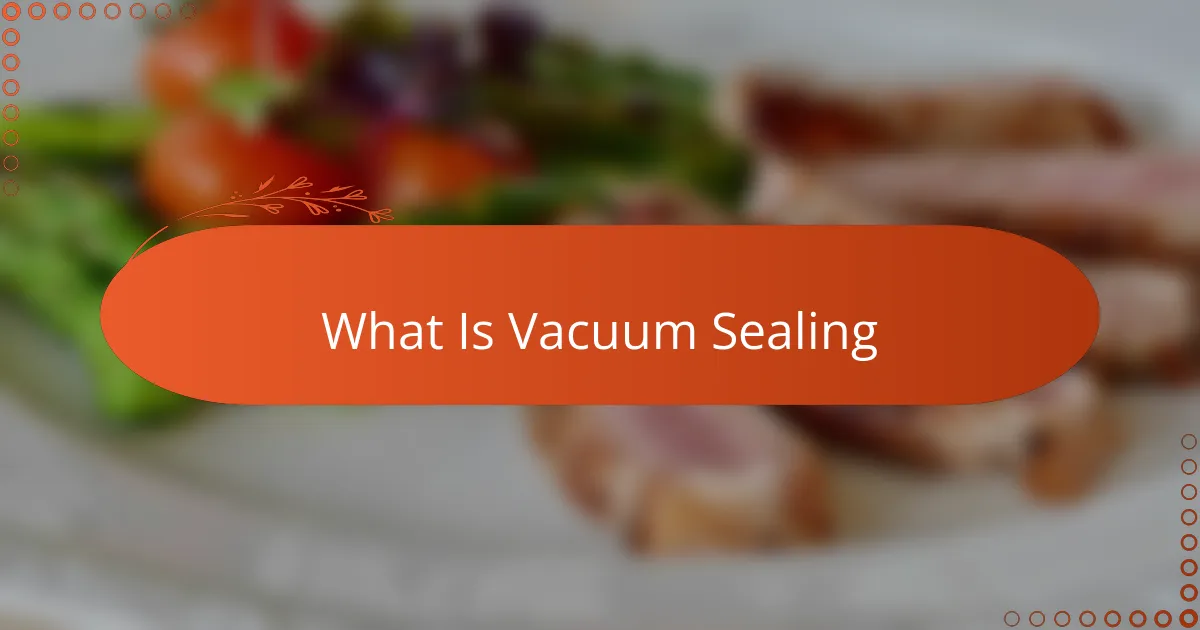
What Is Vacuum Sealing
Vacuum sealing is a method that removes air from a bag or container before sealing it tightly. From my experience, this simple action slows down the spoilage process by keeping oxygen away from food, which can be a game-changer for preserving summer veggies.
Have you ever noticed how quickly fresh vegetables lose their crispness? I have, and vacuum sealing helps lock in that freshness much longer than traditional storage methods I used before discovering this technique. It feels like giving your produce a little protective bubble, preserving not just texture but also flavor and nutrients.
What I find fascinating is how vacuum sealing creates a sealed environment that prevents freezer burn and reduces moisture loss. This little trick has saved me from wasting countless pounds of garden bounty, making it easier to enjoy the taste of summer months well into winter.
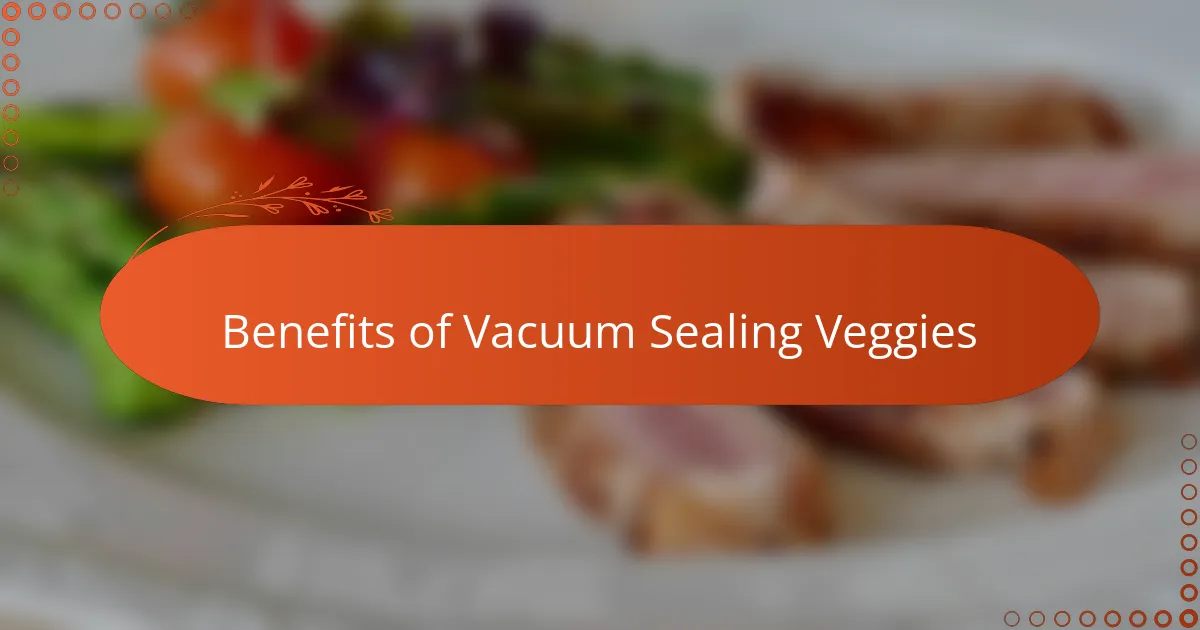
Benefits of Vacuum Sealing Veggies
One of the biggest benefits I’ve noticed with vacuum sealing summer veggies is how much longer they stay fresh. It’s almost like hitting a pause button on spoilage, which means I can enjoy the sweet crunch of a perfectly preserved bell pepper weeks after picking it. Have you ever thrown out wilted produce and felt that twinge of guilt? Vacuum sealing helped me stop that waste and saved money too.
Another thing I appreciate is how vacuum sealing locks in nutrients and flavor. I was surprised to taste the intensity of tomatoes months after harvest, almost as if they were still basking in the summer sun. This method really lets you savor the garden’s bounty all year long, which feels like a small victory in my homesteading journey.
And then there’s the freezer burn battle—vacuum sealing has been my secret weapon here. Instead of dry, tough veggies, I get vibrant, juicy ones ready to toss straight into soups or sautés. It’s these practical benefits that make me confident vacuum sealing is more than just a trendy technique; it’s an essential part of preserving summer’s gifts.
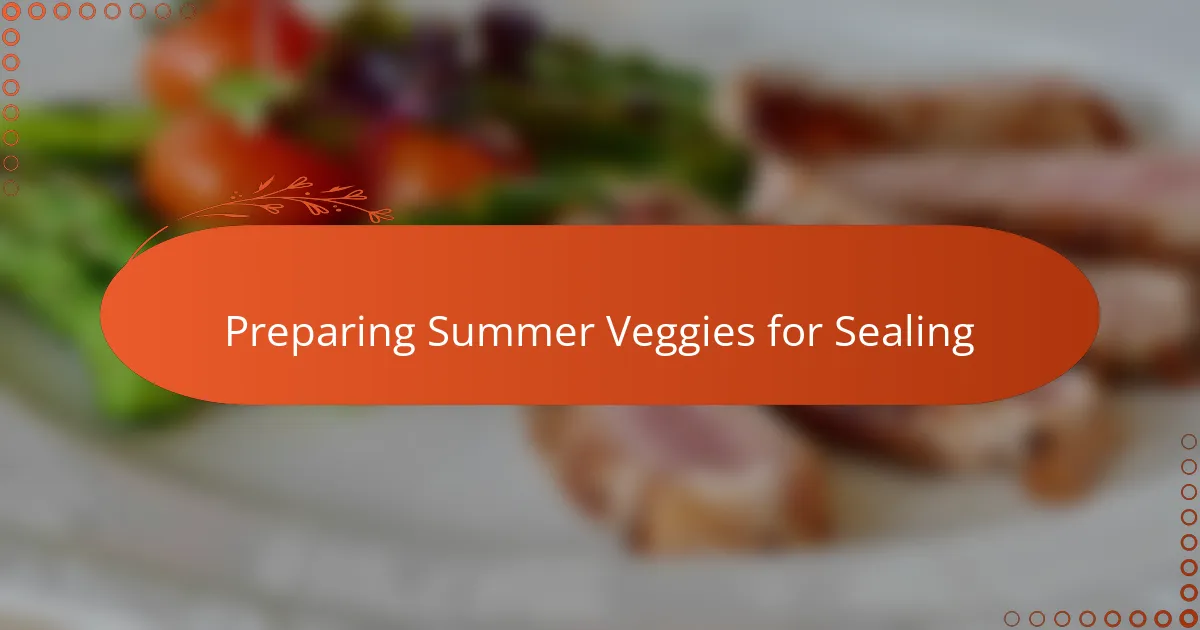
Preparing Summer Veggies for Sealing
Getting summer veggies ready for vacuum sealing takes a bit of care, but it’s worth every minute. From my experience, washing them thoroughly and then patting them dry is the first crucial step—I’ve learned that any lingering moisture can cause freezer burn or sogginess later. Have you ever pulled out a bag of sealed veggies only to find a watery mess? That’s why drying matters so much.
Once cleaned, I usually blanch my veggies like green beans or zucchini to keep their color and texture intact. At first, I wasn’t sure if this step was necessary, but after skipping it once, the sealed veggies turned out mushy and less appetizing. Blanching feels like giving them a quick, refreshing bath before tucking them in for storage.
Then comes the tricky part—arranging the veggies in the bag without squishing them. I try to leave a bit of space so the vacuum can do its job properly without crushing the delicate pieces. Have you noticed how some veggies flatten completely when sealed too tightly? Finding that balance is an art I’m still perfecting with every batch.
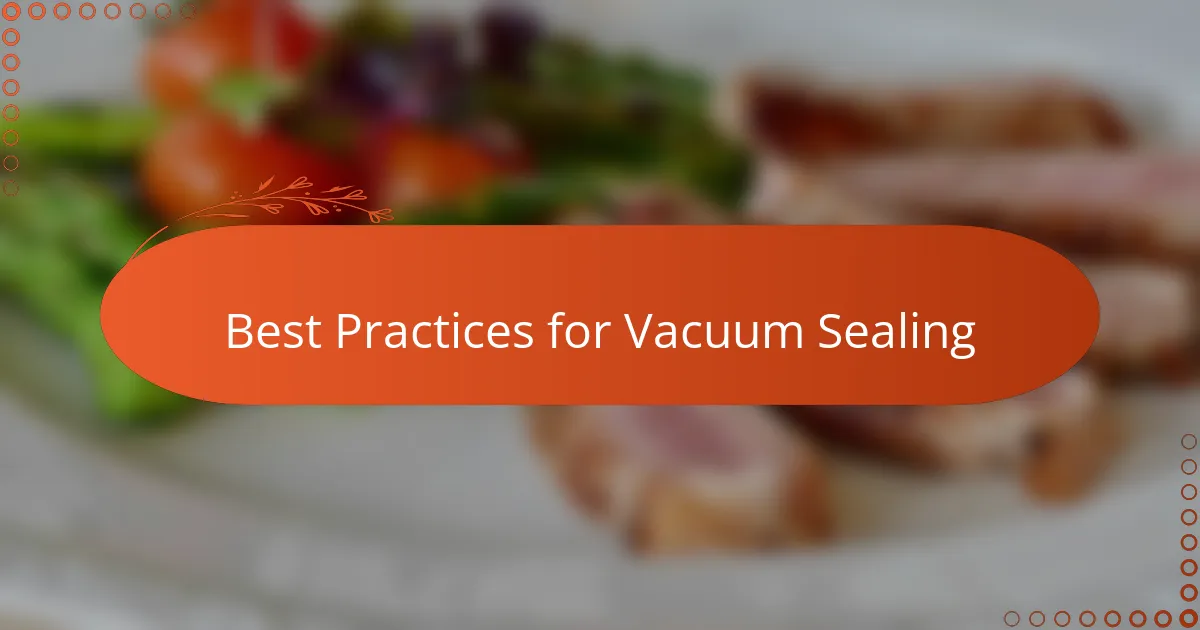
Best Practices for Vacuum Sealing
When it comes to best practices for vacuum sealing, one thing I’ve learned is to always double-check the bag’s seal. A single tiny gap can ruin the whole effort by letting air sneak back in, which is frustrating after all the careful prep. Have you ever opened a bag only to find the seal partially undone? It’s a lesson in patience and precision that I’ve learned the hard way.
Another tip I swear by is using the right type of bags or rolls designed specifically for vacuum sealing. Early on, I tried reusing everyday plastic bags, thinking it’d save time and money, but the results were disappointing—they just didn’t hold up well. Investing in quality vacuum seal bags feels like a small luxury that pays off in extending freshness and saving veggies from freezer burn.
Last, I always label and date each sealed bag. It might sound basic, but nothing beats the feeling of grabbing a perfectly preserved veggie bag and knowing exactly when it was sealed. It’s like having a little garden time capsule, and it helps me rotate older bags first, ensuring nothing gets forgotten or wasted. Have you tried this simple habit? It’s been a game changer in my kitchen.
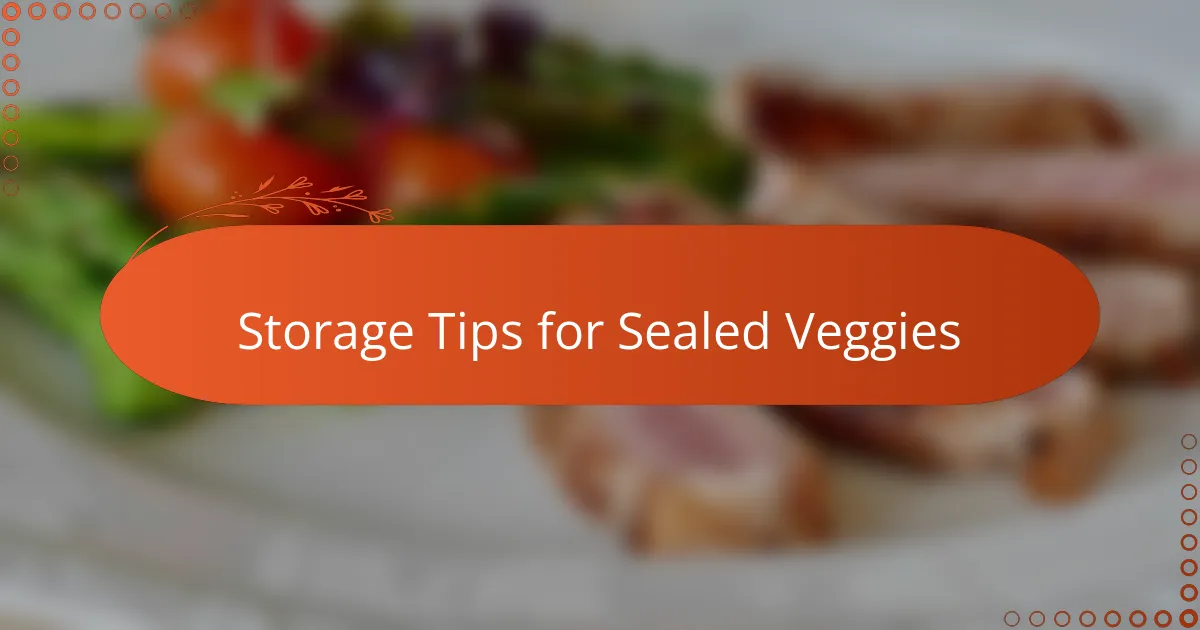
Storage Tips for Sealed Veggies
One thing I’ve come to realize is that storing vacuum-sealed veggies in the fridge versus the freezer makes a big difference. For veggies you plan to use within a week, the fridge works well to keep them crisp. But if you’re aiming for long-term storage, freezing is my go-to—nothing beats pulling out a perfectly preserved bag of corn or green beans on a cold winter day.
I’ve also learned to keep sealed bags flat and spread out while freezing, rather than piling them up haphazardly. This little habit helps the veggies freeze quickly and evenly, preserving their texture better than if they clump together. Plus, it saves space in my freezer—a win-win, right?
Labeling plays a bigger role than I expected. I used to guess when I sealed the bags, only to find some veggies lingering too long. Now, I jot down the date clearly on each bag, which feels like a tiny but crucial step in my storage routine. Have you ever fished out a mystery bag from the freezer and hesitated? Tracking dates gives peace of mind and keeps waste at bay.
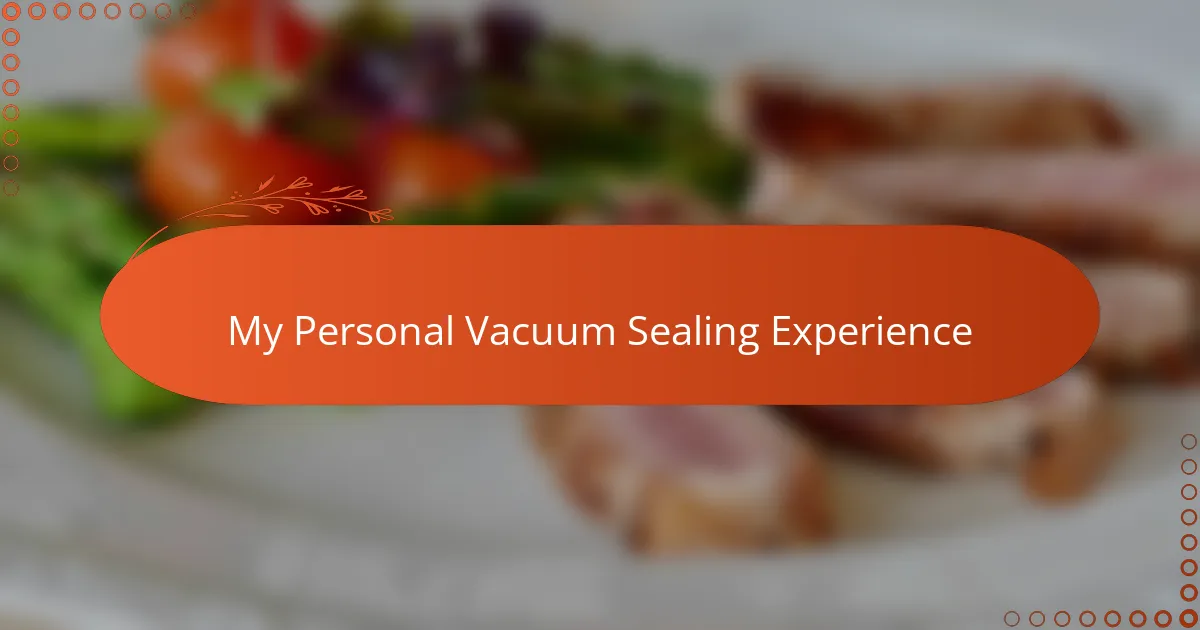
My Personal Vacuum Sealing Experience
Vacuum sealing summer veggies quickly became one of my favorite kitchen routines. I remember the first time I vacuum-sealed a batch of freshly picked zucchini; opening that bag weeks later felt like unwrapping a little gift from my garden. Have you ever had that moment when preserved veggies look as vibrant as the day you picked them? That’s the magic vacuum sealing brought to my homestead.
What surprised me most was how user-friendly the process turned out to be. Initially, I was worried about fumbling with the machine or messing up the seal. But after a few tries, it almost became a form of mindful therapy—carefully packing, sealing, and labeling each bag gave me a sense of accomplishment and control over my food supply.
Of course, not every attempt was flawless. I’ve had moments where I sealed bags too quickly, leaving some air trapped inside, which was frustrating. But those little mistakes taught me the importance of patience and paying attention to detail. Now, I see vacuum sealing as both an art and a science that connects me more deeply with my summer harvests.
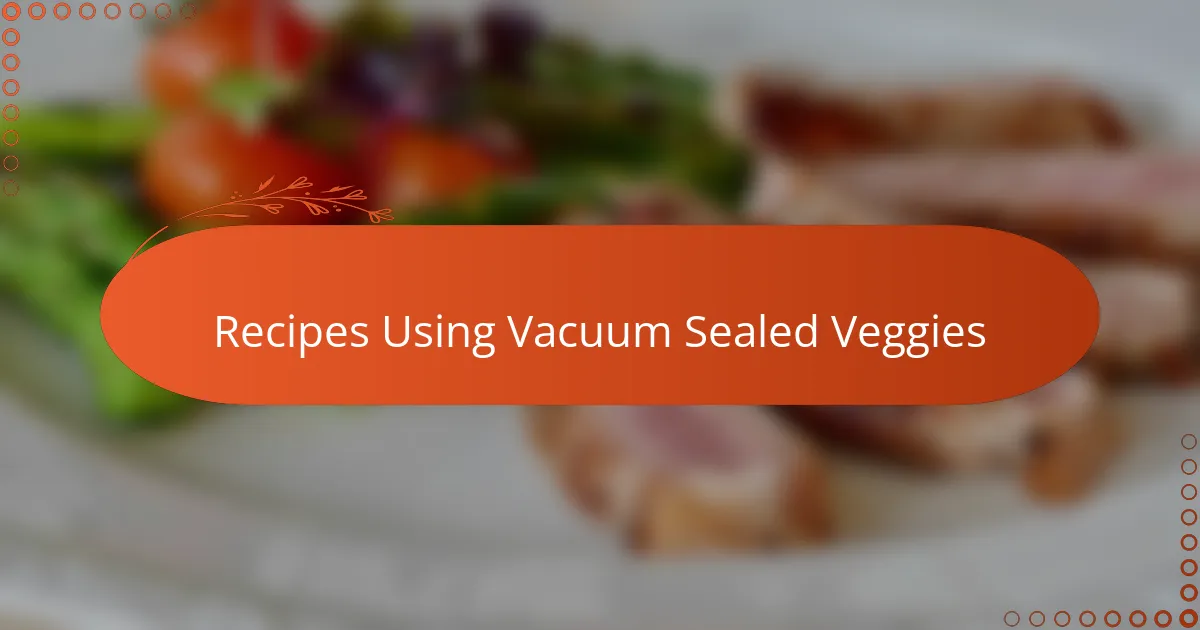
Recipes Using Vacuum Sealed Veggies
When it comes to recipes using vacuum sealed veggies, I’ve found they open up a world of convenient and flavorful cooking options. For example, tossing vacuum sealed green beans straight into a stir-fry saves me prep time, yet the veggies maintain that fresh snap I love. Have you ever grabbed a bag from your freezer, expecting mush, only to find perfectly tender-crisp veggies? That little convenience makes weeknight dinners feel effortless.
One of my favorite ways to use vacuum sealed summer veggies is in soups and stews. Because the veggies retain so much flavor and texture, they add a richness that canned or frozen alternatives can’t match. I remember making a hearty vegetable minestrone during a chilly evening and being amazed at how vibrant the peas and carrots tasted, almost like they had been picked just that morning. It’s a small but satisfying win when your preserved veggies elevate a simple recipe.
Have you tried tossing vacuum sealed tomatoes into pasta sauces or casseroles? That intense, sun-ripened flavor shines through, and the sealed veggies release their juices at just the right pace. I often use these preserved gems to build depth in dishes without extra seasoning, which is a real time-saver. Using vacuum sealed veggies truly feels like extending the garden’s bounty beyond the growing season, one delicious meal at a time.
